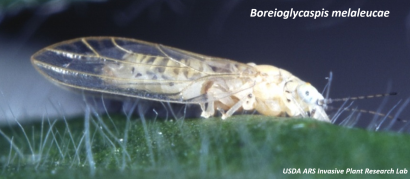| Melaleuca quinquenervia |

|
IPRL results from Melaleuca quinquenervia from three biological control insects.

A foliage-feeding weevil released in 1997

A gall forming midge released in 2008

A sap-feeding psyllid released in 2002
Attack by these agents has had the following impacts on Melaleuca quinquenervia:
- Up to 99% reduction in seed production.
- Greater than 85% reduction in the number of seed bearing trees.
- Tree biomass reduced by up to 77%.
- Field populations have become up to 84% less dense.
- Plant growth rate reduced by 50%.
- Trees are now 36.5% more susceptible to fire.
- Trees are now 30-40% more susceptible to herbicides.
- Native plant diversity has increased by up to four fold.

No biological Control

Biological control present
For more details please reference links to publications below:
Biological control increases the susceptibility of Melaleuca quinquenervia to fire.
Combining biological and mechanical tactics to suppress Melaleuca quiquenervia
Resource regulation of an invasive tree by a classical biological control agent.
Field Guide for the Biological Control of Weeds in Eastern North America/Melaleuca

